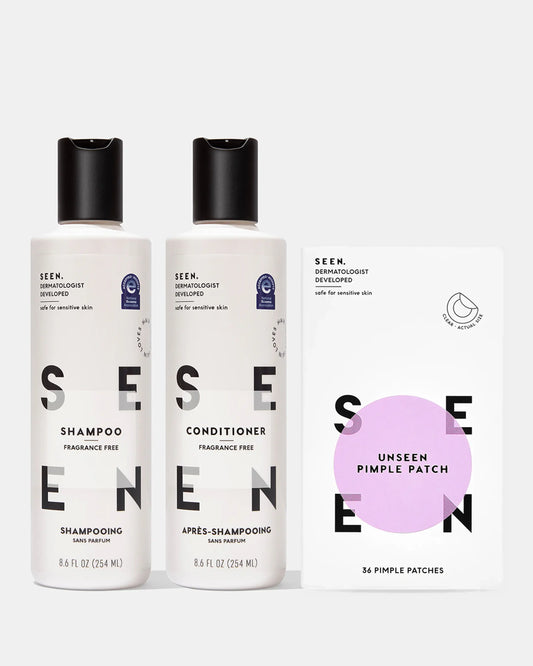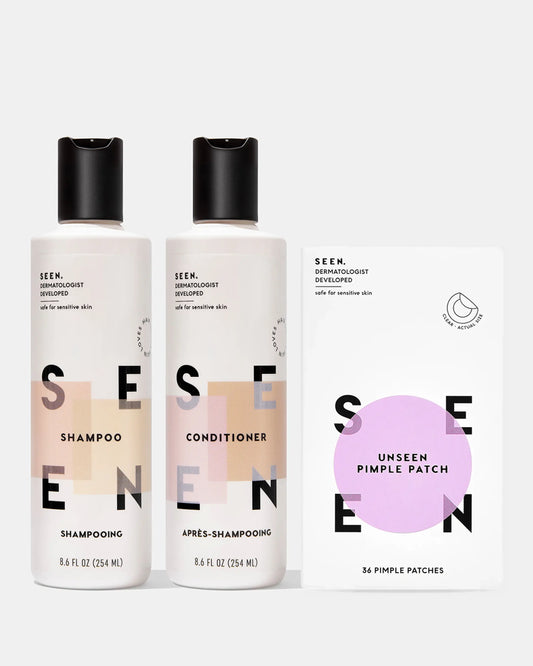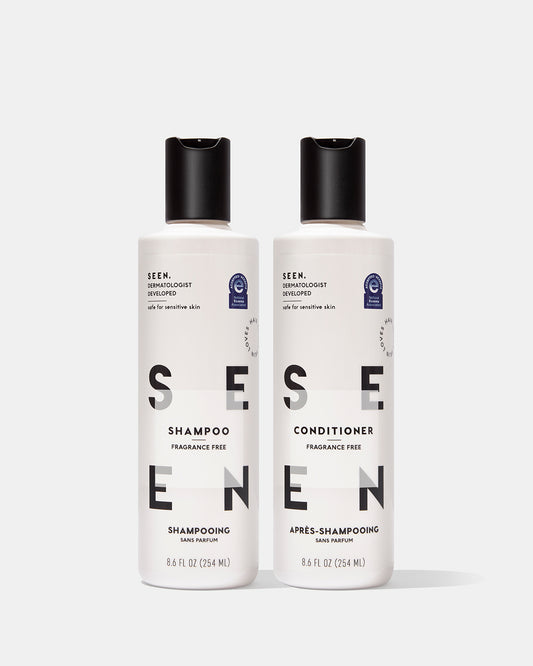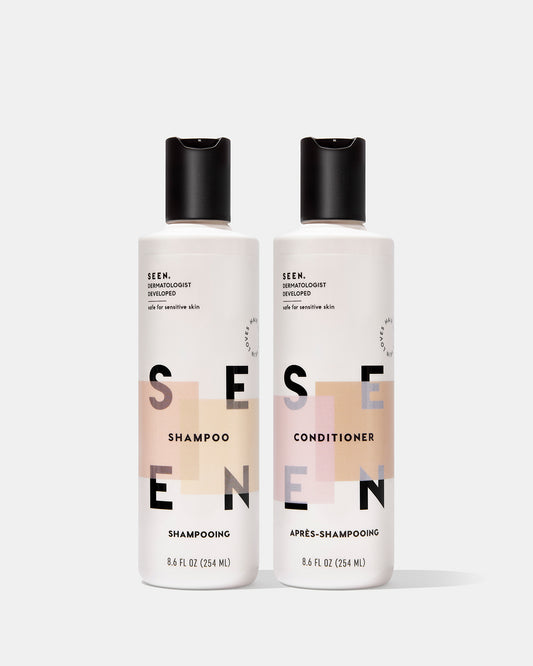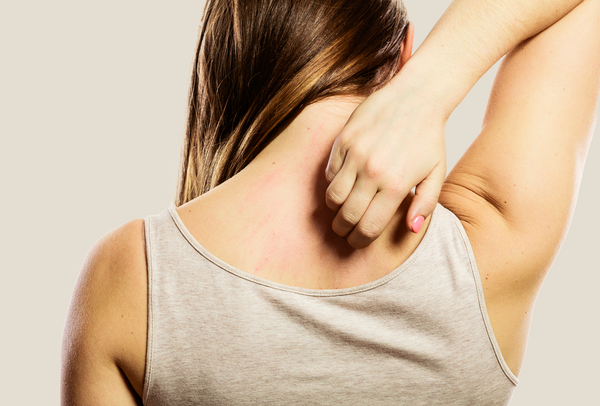Acne is the most common skin condition in the United States, affecting up to 50 million teenagers and adults each year. Breakouts can be more than a nuisance, and can cause emotional distress as well. Since June is Acne Awareness Month, we wanted to take this opportunity to explain the impact that haircare can have on acne.
Harvard-trained dermatologist Dr. Iris Rubin developed SEEN after experiencing breakouts that she traced back to a surprising cause: Her haircare products. This sparked the idea for SEEN, and Dr. Rubin set out to create haircare formulations that would provide all the benefits of salon-quality products without clogging pores or irritating sensitive skin.
SEEN steers clear of many common haircare ingredients that can contribute to acne and irritation—and adds ingredients that promote beautiful hair and healthy-looking skin. All SEEN products are also available fragrance free and have received the National Eczema Association Seal of Acceptance. Our Fragrance Free Shampoo and Fragrance Free Conditioner have also received the National Psoriasis Foundation Seal of Recognition.
4 Facts About Acne
#1: Haircare products can cause breakouts.
SEEN performed a study that was published in a peer-reviewed dermatology journal that showed rinse-off and leave-in haircare products can leave a residue that can remain on the scalp and skin for hours. Since traditional haircare is not always designed with the skin in mind, this can pose an issue for acne-prone skin. Bottom line: Using haircare products that contain pore-clogging ingredients can lead to breakouts.
SEEN also performed a dermatologist graded clinical study of 27 participants with mild to moderate acne that showed 70% with body acne improved and 52% with face acne improved just by switching to non-comedogenic and non-medicated SEEN Shampoo and Conditioner for eight weeks.1
#2: Haircare can contribute to body acne, too…
Breakouts aren’t always limited to the face, and the back, shoulders, chest, and even buttocks can be common problem spots as well. Regardless of location, acne forms when pores become clogged with dead skin cells and oil—and your products (including your haircare) can also contribute to clogged pores if they are comedogenic. It’s basically impossible to use any haircare product without it getting on your skin since shampoo and conditioner rinse down your scalp, face, and body in the shower. Leave-in products can also transfer from your hair to the skin, or from your hair to a pillow or towel that then touches the skin.
3: Acne-safe haircare is an essential part of your acne-safe skincare regimen.
Our products are also proven to deliver stronger, smoother, healthier-looking hair, while supporting healthy looking skin. In addition to the benefits SEEN Shampoo and Conditioner have for acne-prone skin, using these products as a regimen also reduces frizz by 57%2 and reduces breakage by up to 59%3.
4: A “head-to-toe” acne-safe routine goes a long way for clearer looking skin.
Non-comedogenic and non-irritating SEEN is the ideal foundation of any acne-safe haircare routine, but SEEN Shampoo and Conditioner are just the beginning. It’s important to consider your entire shower routine—and non-comedogenic, non-irritating SEEN Body Wash gently yet effectively cleanses skin without clogging pores.
Remember, the hair products you use after the shower matter for acne-prone skin, too. SEEN is proud to offer non-comedogenic and non-irritating styling options for all types of hair—and they are all available fragrance free!
In celebration of Acne Awareness Month, get a FREE box of UNSEEN Pimple Patches on orders of $75+! Even if you are committed to a comprehensive hair and skincare regimen that’s safe for acne-prone skin, pimples can happen! A gentle, non-irritating way to target blemishes, these patches have hydrocolloid gel to absorb the “gunk” plus a plant-based alternative to retinol called bakuchiol. They also provide a discreet protective barrier and are safe for sensitive skin.
1 In a dermatologist-graded clinical study, 27 subjects with mild to moderate acne used SEEN shampoo and conditioner as a regimen for 8 weeks. SEEN is non-medicated and can help those for whom hair products are contributing to acne.
2 8 hair tresses, compared to control washed with SLES
3 Repeated grooming study with 10 bleached hair tresses, compared to control


